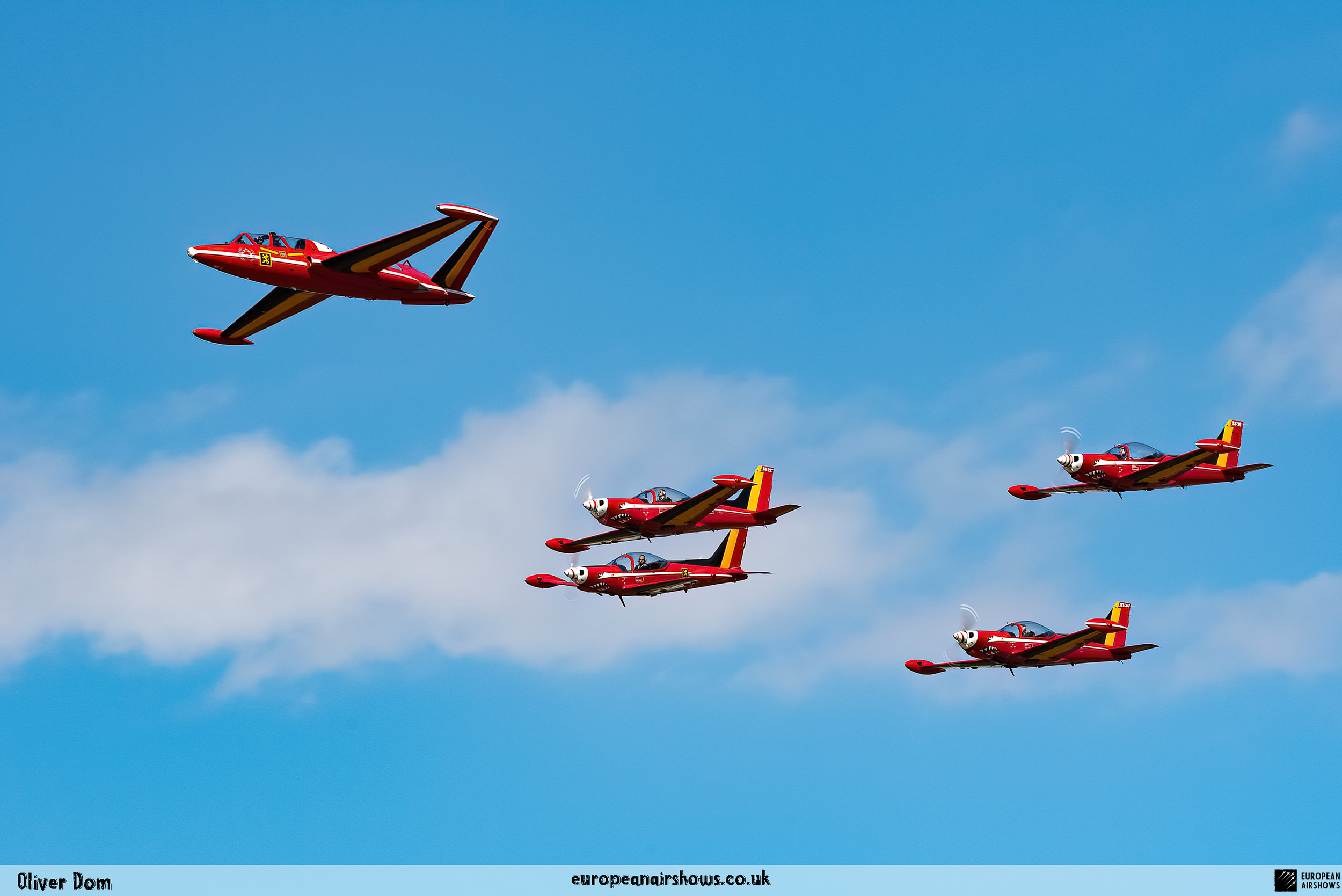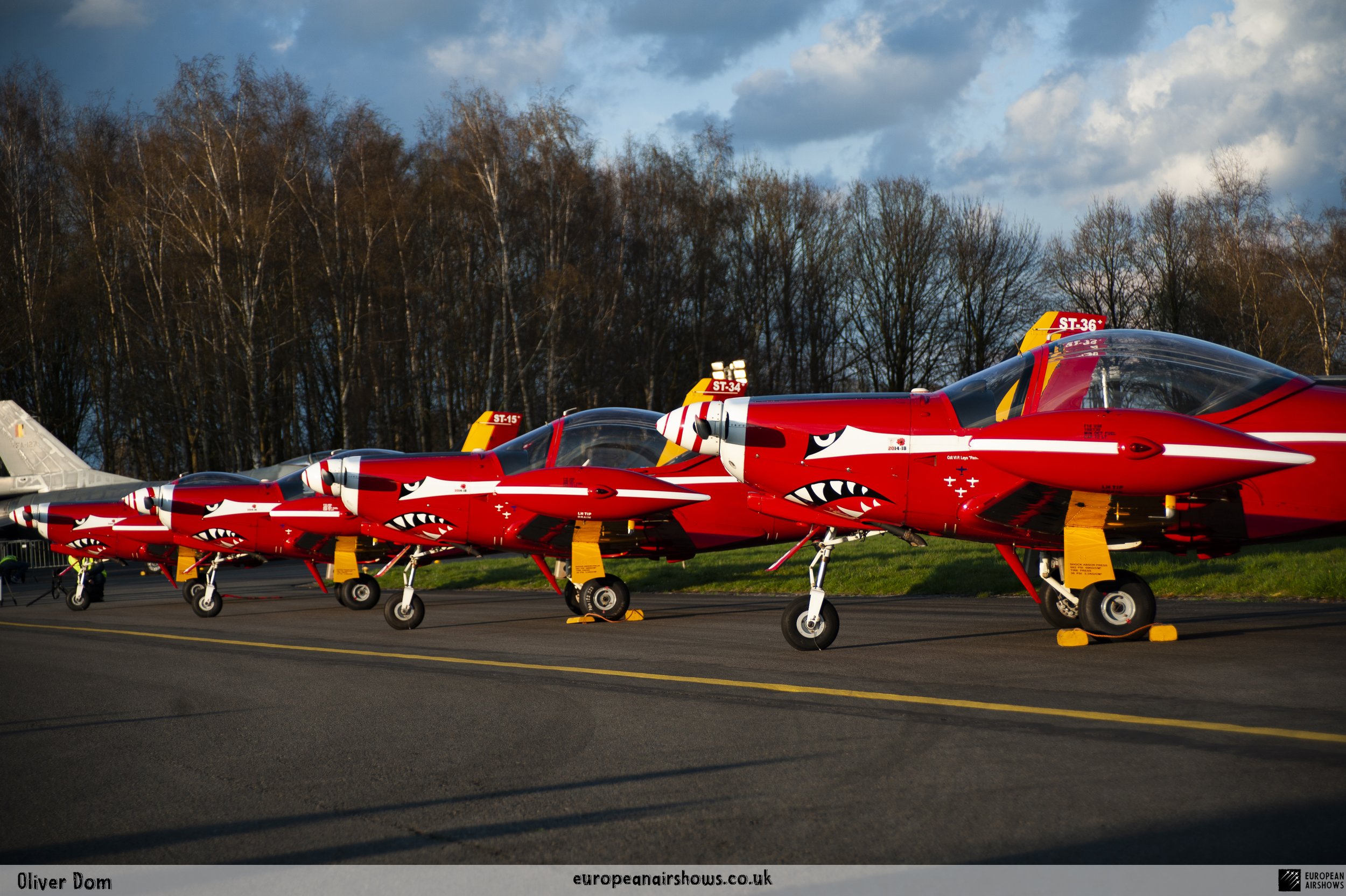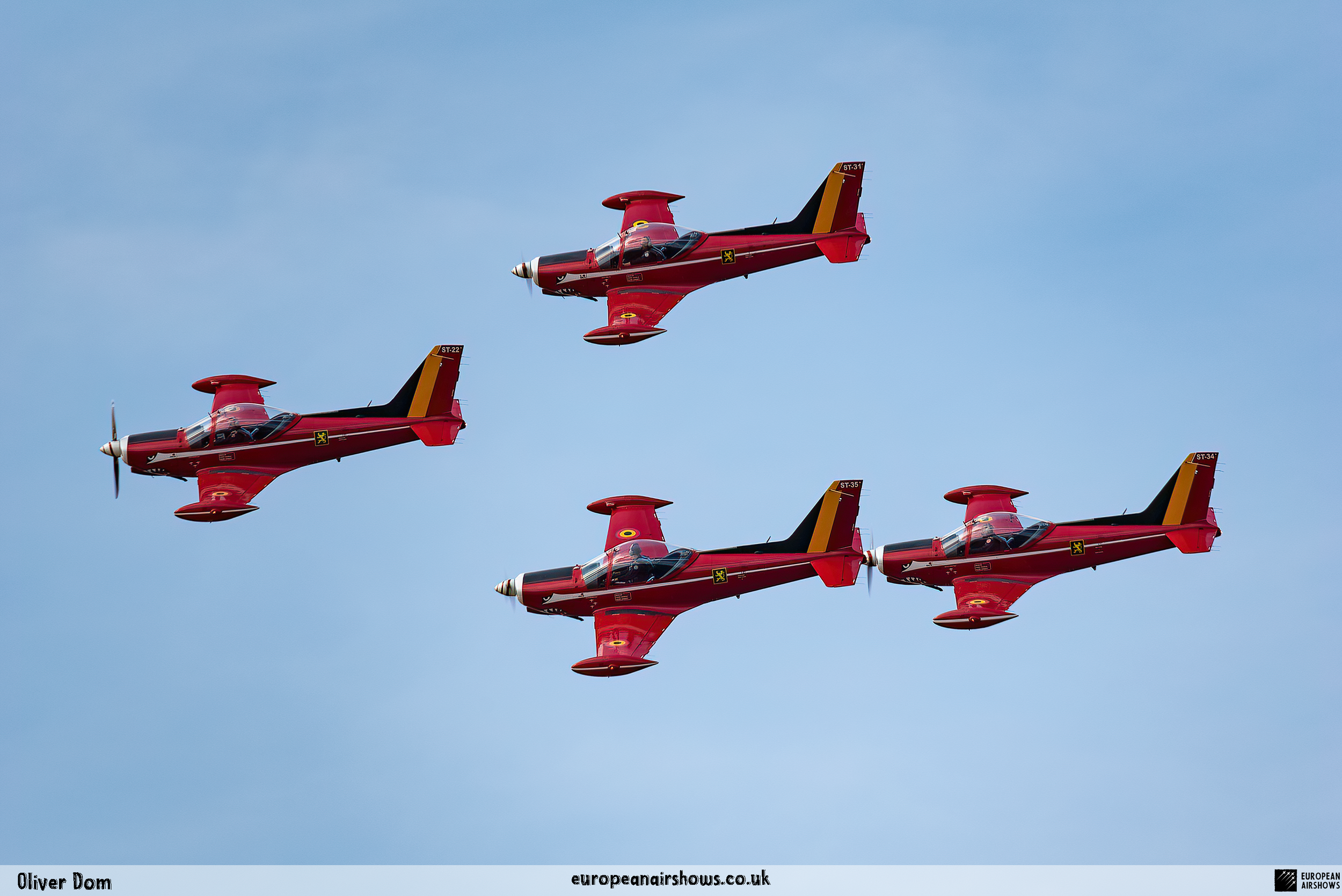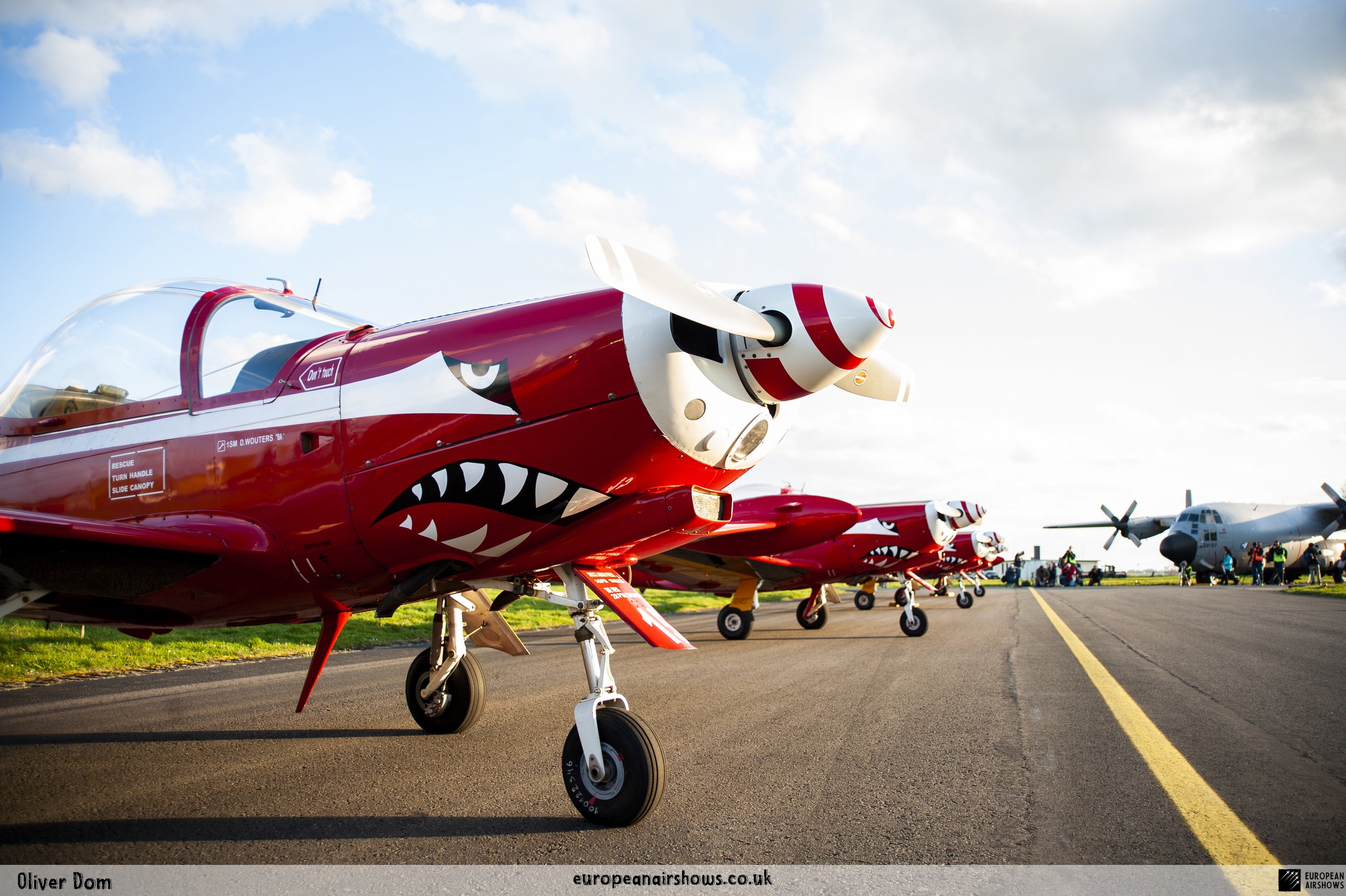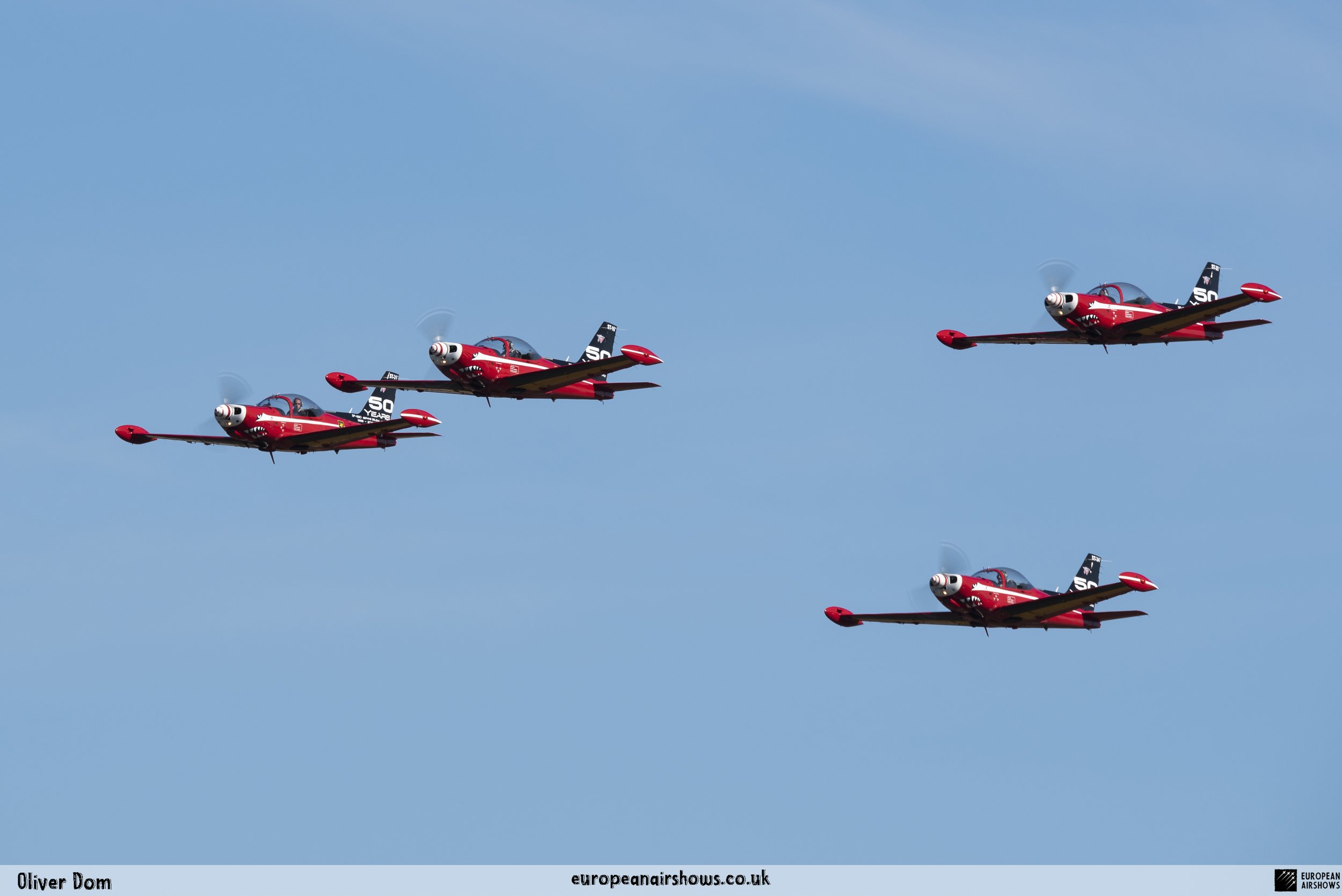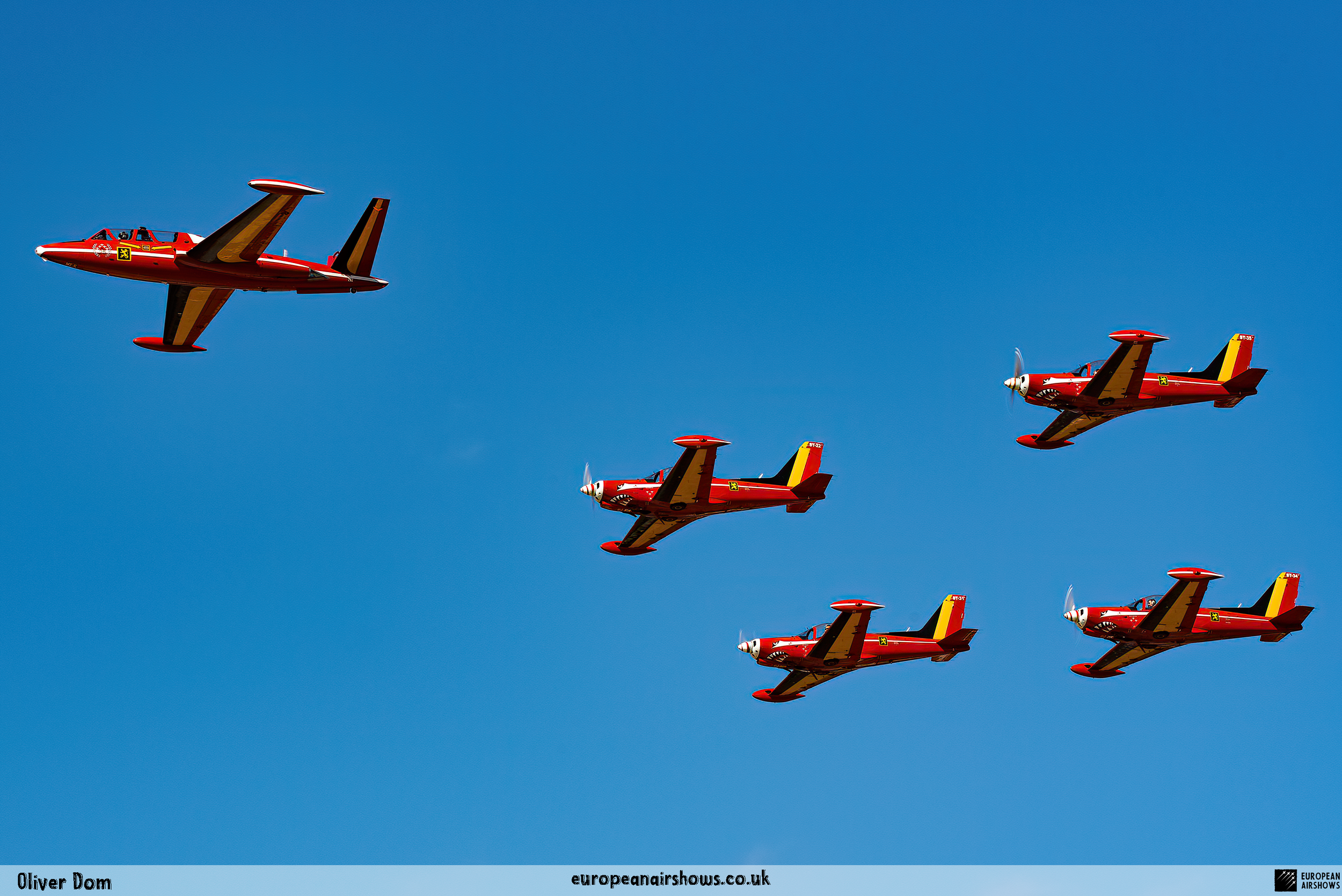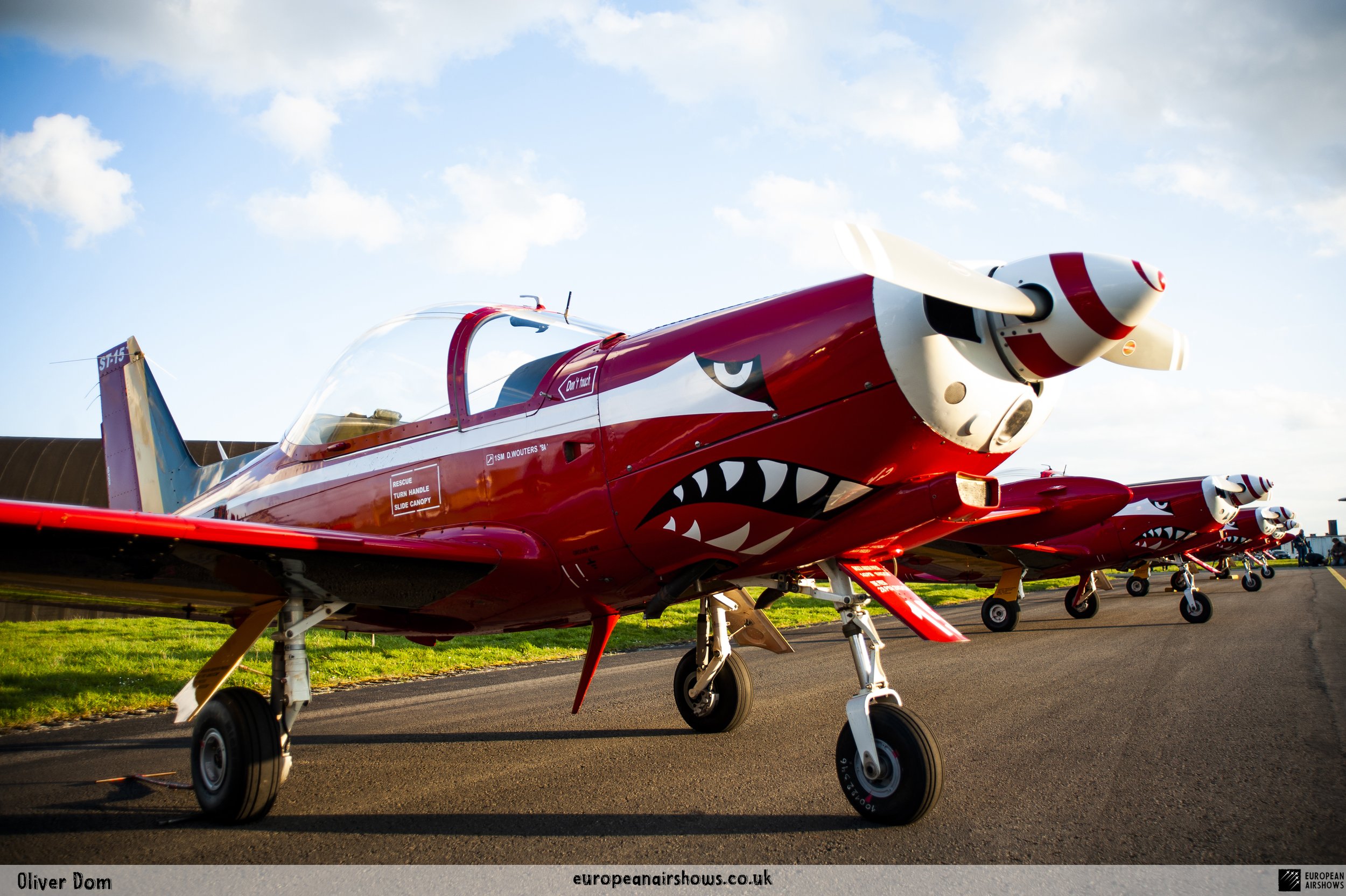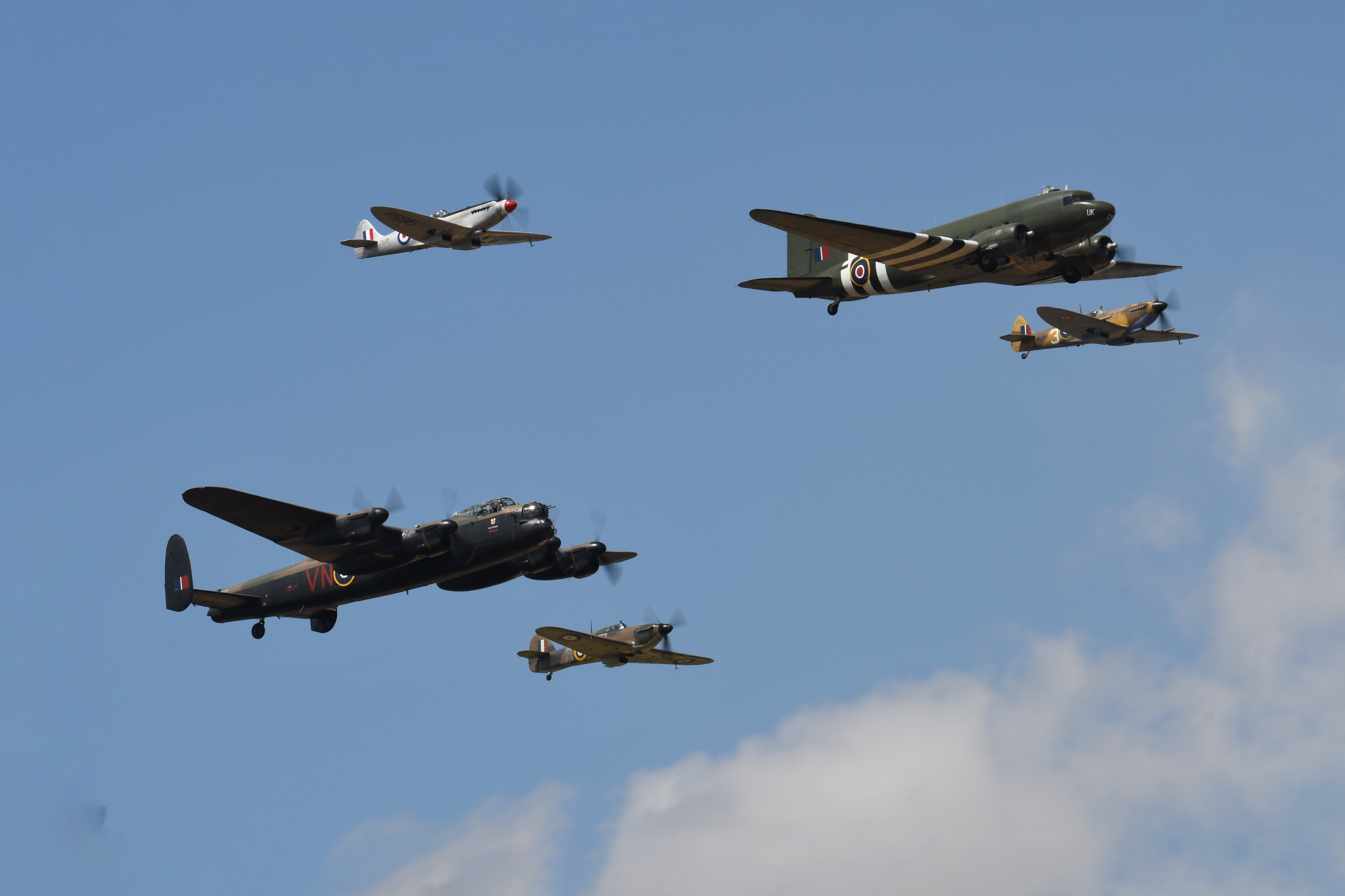Red Devils
Country
Belgium
Size
4 Aircraft
Base
Beauvechain Air Base
The Red Devils are the official aerobatic display team of the Belgian Air Force. The team consists of four SIAI Marchetti SF260 trainer aircraft in an overall red paint scheme and colours of the Belgian national flag on the bottom of the wings and the tail fin. All pilots of the Red Devils are flight-instructors and combine their displays with their regular duties. The team is part of the 1st Wing based at the Beauvechain Air Base.
The original Red Devils demonstration team was created in 1957 and flown the British Hawker Hunter F.6 fighter aircraft from the 7th Fighter Wing at the Chièvres Airbase. In 1959 the team performed displays on sixteen aircraft but due to the high risk of flying such a big formation, this was later reduced to five aircraft. In 1963 the 7th Fighter Wing was disbanded and so was the team. Two years later the Red Devils were born again this time flying the Fouga CM170R Magister twin-engined jet trainer based at the Brustem Airbase. Between 1965 and 1977 the team successfully performed a number of displays all over Europe until they were disbanded once again in 1978 due to the arrival of the new Dassault Alpha Jet trainer which was the successor of the Fouga Magister. Due to tight budget restrictions, the team never changed to the new Alphajet. In 2011 after thirty years the Red Devils were reborn once again to underline the 65th anniversary of the Belgian Air Force. This time flying the Italian SIAI Marchetti SF260 light trainer aircraft which they use to this day.
| Back to Top |
Leonardo SF-260
The SIAI-Marchetti SF.260 (now Leonardo SF-260) is an Italian light aircraft that has been commonly marketed as a military trainer and aerobatics aircraft.
The SF.260 was designed by Italian aircraft designer Stelio Frati, while production work was originally performed by Milan-based aviation manufacturer Aviamilano. On the 15th of July 1964, the first prototype performed its maiden flight (then designated F.260). Shortly thereafter, responsibility for production was transferred to SIAI Marchetti, who had purchased the rights to the design; manufacturing continued to be performed by this firm until the company was bought by Aermacchi in 1997.
The SF.260 has been largely sold to military customers as a trainer and light combat aircraft. In addition, there have been limited civil sales to private operators; during the late 1960s, the type was marketed in the United States under the name Waco Meteor. Armed military versions, sold as the SF.260W Warrior, proved to be popular with smaller air forces, which could arm the type for use in the close air support role. Both piston-powered and turboprop-powered models have been developed.
The SIAI-Marchetti SF.260 is a low-mounted cantilever wing monoplane, complete with a retractable tricycle undercarriage. It has been often praised for its sleek lines and sporty aesthetic appearance, while maintaining function as well, possessing jet-like handling as a result. The construction is typically known for having a high level of workmanship, while the exterior is extensively flush-riveted to reduce aerodynamic drag, except for a few locations such as the flaps and some fairings. The SF.260 has a compact, dense structure which possesses ballistics similar to a jet aircraft, and is approved to perform aerobatic manoeuvres. In comparison to most single-engine aircraft, it possesses superior power loading and above-average wing loading.
The original model of the SF.260 was powered by a single Lycoming O-540 engine, capable of providing 260 hp. The standard model made use of a carburettor, while fully aerobatic models featured fuel injection instead. The SF.260 has been described as having the power to be immune to the gyration-like effects of turbulence and possessing a high rate of climb. During the 1980s, aerospace publication Flying Magazine stated the SF.260 to be: "the fastest normally aspirated piston single in production". The SF.260 holds the airspeed records for aircraft in its class over the 100 km and 1,000 km closed circuits. Later-built models often made use of turboprop engines; the initial model to be equipped as such, designated as the SF.260TP, was powered by a single Allison Model 250 engine, flat-rated at 350 shp.
The pilot and up to two passengers (or pilot and one student in trainer versions) are accommodated under a broad, extensively glazed canopy. The pilot, who accesses the aircraft via purpose-built walkways along the wing, would be typically seated on the right-hand side of the cockpit; military pilots are trained to control the aircraft using their right hand on the stick and their left on the throttle.
While being a fully aerobatic aircraft, it possesses favourable handling qualities, including relatively tame stall characteristics. Controllability during stalls is augmented by vanes located on the wingtip tanks which accelerate airflow over the tips and ailerons. The SF.260 is a relatively fast aircraft, complete with responsive controls; as a product of the latter, pilots need to maintain awareness of speed dips, although ample aerodynamic warning is typically present. Piston-engined and turboprop-engined SF.260 models generally share similar handling and flight performance. Speed limitations on the landing gear have been highlighted as a negative attribute. In order to safely perform aerobatics, the rear seat has to be unoccupied and the tip tanks must be empty of fuel prior to commencing any such manoeuvers, reducing the SF.260's flight endurance to roughly one and a half hours.
| Back to Top |
